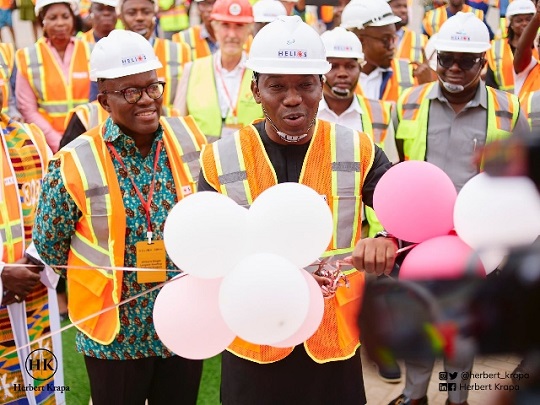The Minister of State at the Ministry of Energy, Herbert Krapa, has commissioned Africa’s largest rooftop photovoltaic solar plant, producing 16.8 megawatts of electricity, at the Tema Free Zones Enclave.
Mr. Krapa, wearing protective gear, climbed the three-storey rooftop to inspect the panels and turned on the switch for the USD17 million project to commence provision of electricity.
He praised Helios Solar Energy, a subsidiary of LMI Holdings, for their role in achieving the government's renewable energy targets.
Financed by the International Finance Corporation (IFC) of the IMF Group, the project covers an area of 100,000 square metres.
The construction, connection, and installation were executed by Ghanaian engineers and technicians.
Mr. Krapa assured that the government would continue to provide an enabling environment and policies for private sector renewable energy projects.
He emphasised the private sector's crucial role in contributing to the government's goal of 10 per cent renewable energy sources in the nation’s energy mix by 2030.
“This project underscores the power of the private sector to contribute to government's agenda in bringing growth, prosperity, and development to the people,” Mr. Krapa stated.
He revealed that: “Apart from enhancing electricity supply, it will lead to the reduction of CO2 emissions.”
Mr. Krapa highlighted the socio-economic benefits, noting that the project creates greener and sustainable jobs and helps meet nationally determined contributions under the Paris Agreement.
It also introduces skills and technology to young engineers involved in its development and maintenance.
Regarding its impact on industry, Mr. Krapa said: “It will contribute to reduced cost of power in industry and position the manufacturing sector in a very competitive stead. Over time, solar energy leads to reduced costs in the mix.”
Mr. Krapa emphasised that the project aligns with the government's renewable energy vision.
“We have come up with a national energy transition framework aiming for a net zero pathway by 2060,” he added.
Mr. Krapa announced that the government had modeled the National Energy Transition Framework into an investment plan, launched by the president during the UN General Assembly last year. Several projects are required for this implementation plan to succeed.





